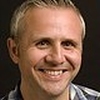 David R Hamilton, Ph.D. – I read a really interesting book recently by Laura Mersini-Houghton. She’s one of the world’s leading cosmologists.
David R Hamilton, Ph.D. – I read a really interesting book recently by Laura Mersini-Houghton. She’s one of the world’s leading cosmologists.
She says we live in a multiverse, not a universe.
Ours is only one of a vast number of other universes. And as weird as it sounds, there are probably other versions of You in some of these.
What? I know! Bear with me; I’ll come back to that part in a bit.
I did say this week’s blog was going to be a bit different.
So, hear me out.
The Earth is a pretty big place, the solar system even bigger. And beyond that are other stars with their own solar systems. In fact, if you tried to fly a typical passenger airplane to the nearest star (apart from the Sun) it would take you twenty million years to get there. And that’s not even factoring in the return journey. It’s a long way.
But miniscule by cosmic standards.
Our galaxy (the milky way) contains a few hundred billion stars each separated by about that distance. And the milky way is only one of a few hundred billion other galaxies spread out in our universe.
So I think we can all agree that the universe is huge.
But according to Mersini-Houghton and a host of other cosmologists, there’s literally trillions and trillions of other universes.
How can that be?
Well, our universe wasn’t always as big as it currently is. There was a time – about 13.8 billion years ago – when it was absolutely tiny. So tiny, in fact, that it was smaller than an atom.
Then it inflated, like a balloon being blown up. About 13.8 billion years later you and I were born. Quite a bit happened in the middle, but I won’t bore you with the details.
But let’s wind back to when it was a baby universe. That’s what cosmologists affectionately call our universe when it was first born and was tiny.
It was the size of a quantum particle. Despite the name particle, a quantum particle – like a proton, electron, or quark – isn’t a solid thing like a particle of dust or a grain of sand. It is also a wave of energy.
Our universe, with all of its stars, planets, and people, was once a wave. Like a wee vibration.
Quantum Theory outlines the rules by which quantum particles and waves operate. Things in the quantum world are pretty weird. Particles can be in many places at the same time and different particles can be connected instantaneously over vast distances.
Back in the 50s, a PhD student named Hugh Everett III, wondered if the rules of quantum theory could be applied to our baby universe.
Everett’s theories didn’t catch on at the time and many believe he was treated unfairly. He eventually left physics altogether.
In the years since his death, however, his theory – The Many Words Interpretation of quantum mechanics as it’s come to be known as – has become one of the dominant theories of reality.
According to the Many Words theory, there’s a near infinity of universes and an infinite number of versions of You and Me doing lots of different things. In one universe, you turned left this morning, in another you turned right. In one, you’re a president or prime minister, in another you’re an actor, or a plumber, or a nurse, or anything you can conceive of. You can see why physicists at the time didn’t support it.
Mersini-Houghton built on Everett’s ideas and reasoned that our baby universe was merely one of countless trillions of other potential universes, all waves on a landscape of vibrating strings (known as string theory), each with varying likelihoods of springing into being. And even right now, as you read these words, trillions of baby universes are bursting into being somewhere.
She did the math, and calculated that our universe must have been then, and still be today, connected with many of these other universes. The word in physics for this sort of connection is entanglement.
Many people are familiar with the popularized idea of two particles separated by a vast distance. Flick one of them (in physics it’s called making a measurement) and it instantly determines the state of the other, no matter how far apart they are. It’s because they are connected – entangled.
Doing the math, she proposed that if this is true, then our universe must still bear the marks of entanglement with another universe today, like a dent or stretchmark of sorts. She even calculated precisely where in our universe we should find it and how big it should be.
She was spot on.
A couple of years ago, a special satellite was studying the sky to form a special detailed kind of map of the observable universe. It found the dent, the stretchmark. And it was exactly where Mersini-Houghton said it was going to be.
Strong evidence for entanglement with another universe.
Strong evidence that we live in a multiverse.
Our universe, vast as it is, is just like a droplet of water in an ocean of universes.
I did say I’d write something a bit different this week.
References
If you’re interested in reading more, Laura Mersini-Houghton-Houghton’s book is called, ‘Before The Big Bang: The origin of our universe from the multiverse‘.
Copyright 2022 David R. Hamilton PhD.
SF Source Spirit Library Feb 2023
